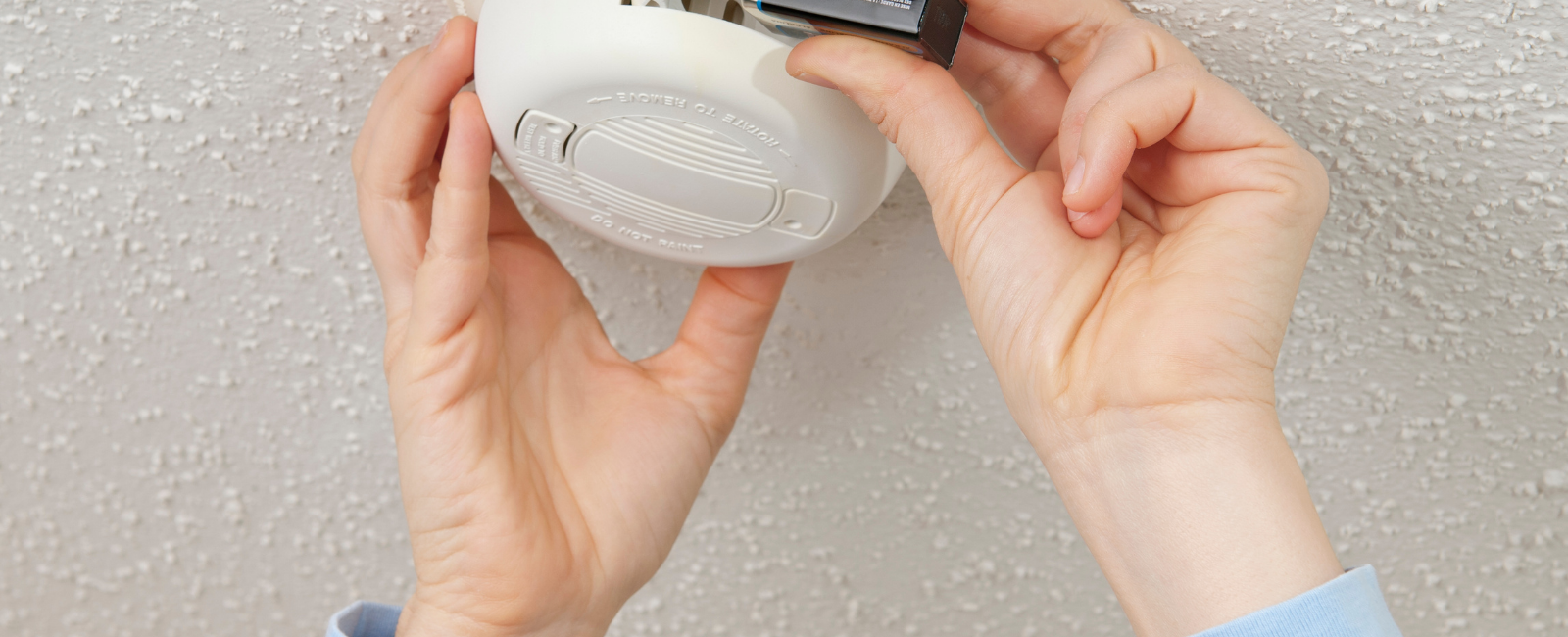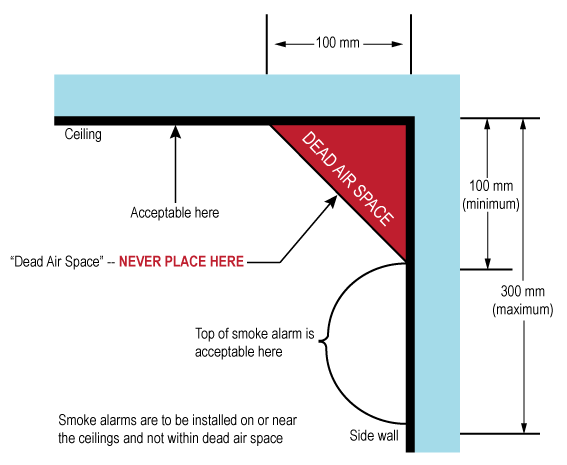Smoke Alarms
Most fatal fires occur at night when people are sleeping. A working smoke alarm will detect smoke and sound to alert you. It is the law for all Ontario homes to have working smoke alarms on every storey and outside all sleeping areas. This covers single family, semi-detached and town homes, whether owner-occupied or rented.
| Choose the Best Alarm |
|
There are two different types of smoke alarms to choose from.
|
| Where to Install Smoke Alarms |
|
Because smoke rises, it is recommended you place the alarms on the ceiling. Avoid ceilings near bathrooms, heating appliances, windows and ceiling fans. Smoke alarm’s need to be installed outside every sleeping area and on every floor of the residence. Always install the smoke alarm on or near the ceiling in accordance with the manufacturer's installation instructions.
|
| Maintain Your Smoke Alarm |
| Test your smoke alarms monthly by pressing the test button. Replace the batteries annually when you change your clocks in the spring. Smoke alarms do expire, even if they still function by using the test button, all smoke alarms (battery or hard wired) must be replaced after 10 years.
Dust can clog a smoke alarm, so gently vacuum alarms annually using a soft brush. Never vacuum electrically connected alarms unless you shut off the power. Test your unit when finished cleaning. When installing, testing, and maintaining smoke alarms, make sure you follow the manufacturer’s instructions. |
Carbon Monoxide (CO) Alarms
Often called the invisible killer, carbon monoxide (CO) is an invisible, odourless, colourless gas created when fuels (such as gasoline, wood, natural gas, propane, kerosene, heating oil) burn incompletely.
If you have fuel burning appliances, or an attached garage, you are required by law to have working CO alarms outside every sleeping area.
| Where to Install CO Alarms |
| Since carbon monoxide moves freely in the air, the suggested location is as near as possible to sleeping areas of the home. The human body is most vulnerable to the effects of carbon monoxide during sleeping hours. To work properly the unit must not be blocked by furniture or draperies. Carbon Monoxide is virtually the same weight as air and therefore the alarm protects you in a high or low location. Always install the CO alarm in accordance with the manufacturer's installation instructions. |
| Maintain Your CO Alarm |
| Test your CO alarms monthly by pressing the test button. Replace the batteries annually when you change your clocks in the spring. CO alarms do expire, even if they still function by using the test button, all CO alarms (battery or hard wired) must be replaced after 10 years.
Dust can clog a CO alarm, so gently vacuum alarms annually using a soft brush. Never vacuum electrically connected alarms unless you shut off the power. Test your unit when finished cleaning. When installing, testing, and maintaining CO alarms, make sure you follow the manufacturer’s instructions. |
| What Should I do if My Carbon Monoxide Alarm Starts Beeping? |
|
ALWAYS REACT TO A CARBON MONOXIDE ALARM THAT HAS ALARMED! GET OUT OF YOUR HOME AND CALL 911 FOR ASSISTANCE. If the CO alarm sounds, immediately move to a fresh air location outdoors or by an open window or door. Make sure everyone inside the home is accounted for. Call 911 for help from a fresh air location and stay there until emergency personnel declare that it is safe to re-enter the home. |
| Reducing CO in Your Residence |
|
Contact Us
 Subscribe to this Page
Subscribe to this Page












